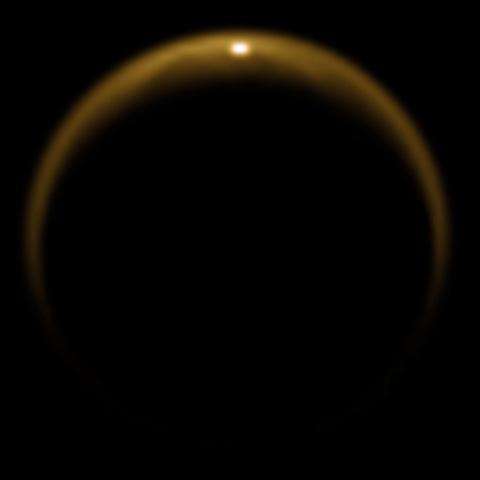Cassini sees Titan cooking up smog

(Phys.org)—A paper published this week using data from NASA's Cassini mission describes in more detail than ever before how aerosols in the highest part of the atmosphere are kick-started at Saturn's moon Titan. Scientists want to understand aerosol formation at Titan because it could help predict the behavior of smoggy aerosol layers on Earth.
According to the new paper, published this week in the Proceedings of the National Academy of Sciences, Titan's trademark reddish-brown smog appears to begin with solar radiation on molecules of nitrogen and methane in the ionosphere, which creates a soup of negative and positive ions. Collisions among the organic molecules and the ions help the molecules grow into bigger and more complex aerosols. Lower down in the atmosphere, these aerosols bump into each other and coagulate, and at the same time interact with other, neutral particles. Eventually, they form the heart of the physical processes that rain hydrocarbons on Titan's surface and form lakes, channels and dunes.
The paper was led by Panayotis Lavvas, a Cassini participating scientist based at the University of Reims, Champagne-Ardenne, France. The team analyzed data from three Cassini instruments—the plasma spectrometer, the ion and neutral mass spectrometer, and the radio and plasma wave science experiment. They compared their results to those obtained by ESA's Huygens probe on its descent through the Titan atmosphere in 2005 and found they were compatible.
Journal information: Proceedings of the National Academy of Sciences
Provided by JPL/NASA





















